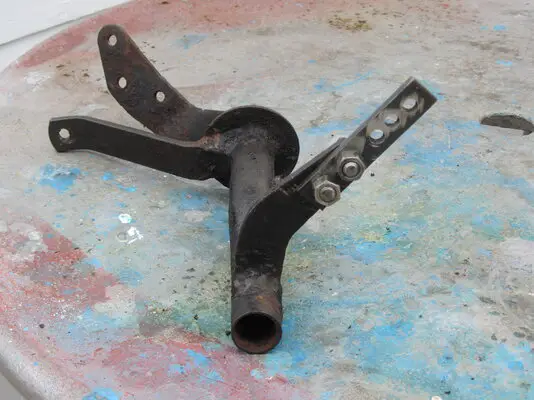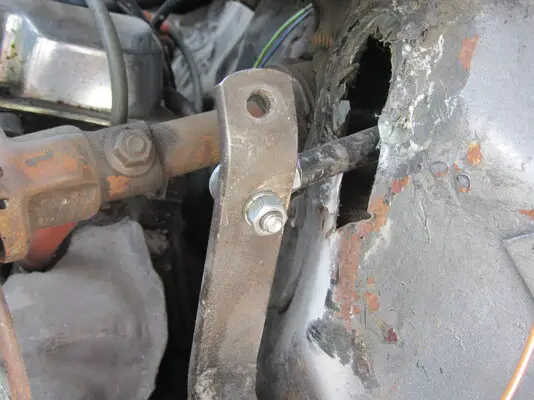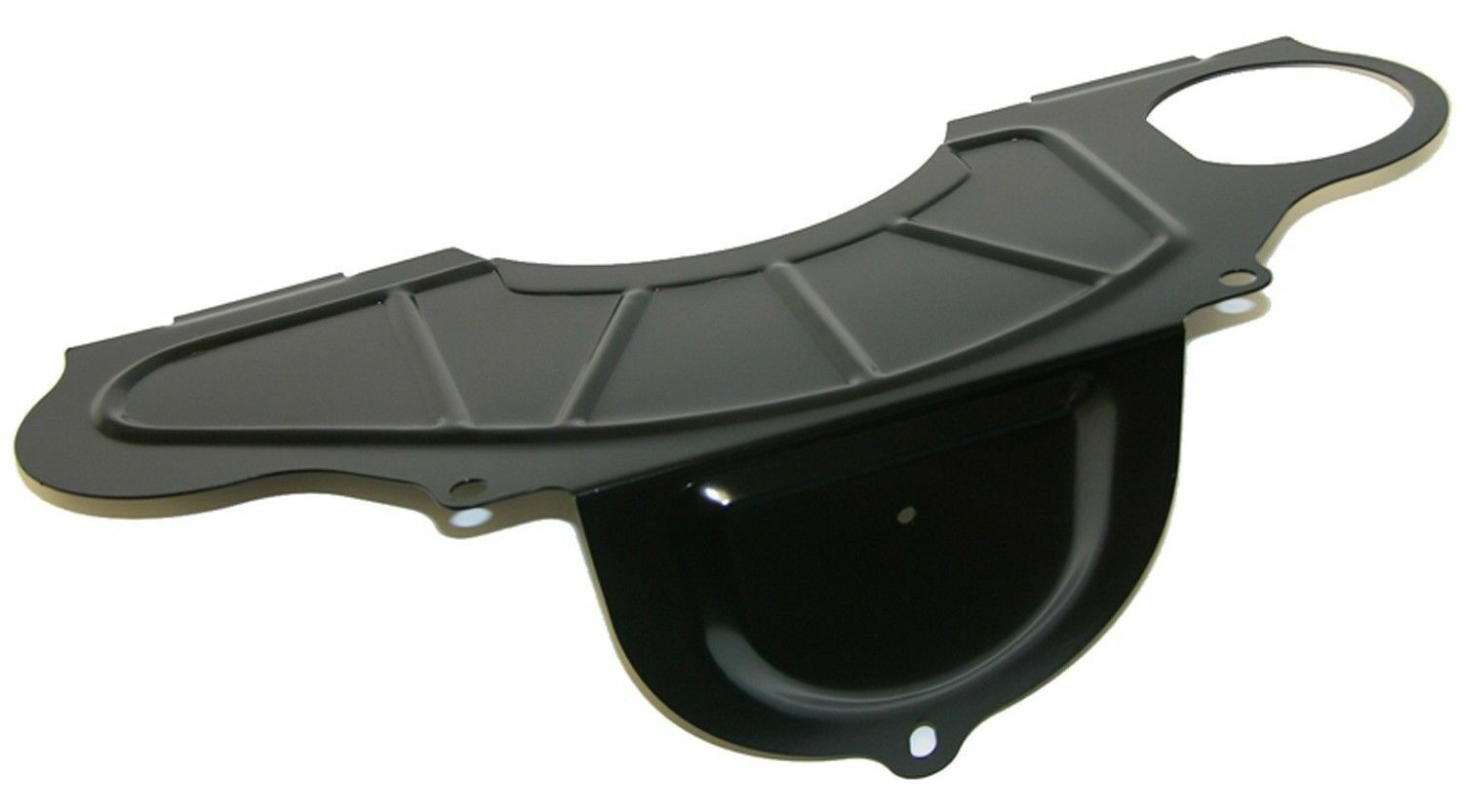Also. Since I cant see the bearing…I “felt” for it using the fork. It likely was riding on the clutch as there was no play. So how much play should I have here? I adjusted it so it’s got about 1/8”. BUT. The spring on the fork is NOT strong enough to keep the fork back. More like a loose slinky. It is brand new and came with the kit. Is this correct or no ???What inspection cover exactly are you talking about ??? Had to get under the car but I am using a G body bell housing and there is no cover. Removed fork boot but not enough room to see …
Clutch shudder
- Thread starter Baker7888
- Start date
You are using an out of date browser. It may not display this or other websites correctly.
You should upgrade or use an alternative browser.
You should upgrade or use an alternative browser.
- Status
- Not open for further replies.
I use a total of three springs on my clutch. One is between the fork and lower Z bar.One is between the fork and the frame. One is between the pedal and dash board. I want the fork held against the Z bar/lower pushrod. I want the fork pulled towards the frame so the bearing is as far away from the clutch as possible. I want the pedal pulled up towards the dash as much as possible. That retracts everything and assures that the bearing is NOT touching the clutch.
Thanks Bonnewagon. Yes I don’t have that style cover.I use a total of three springs on my clutch. One is between the fork and lower Z bar.One is between the fork and the frame. One is between the pedal and dash board. I want the fork held against the Z bar/lower pushrod. I want the fork pulled towards the frame so the bearing is as far away from the clutch as possible. I want the pedal pulled up towards the dash as much as possible. That retracts everything and assures that the bearing is NOT touching the clutch.
How much space between the bearing and clutch do you suppose I should have?
I am wondering if I can achieve the same thing you laid out above, about the springs, by running just 1 heavy duty spring in place of my existing one?? Guessing they came from the factory with only one??
Yes, the factory used just one spring hooked to the little hole in the end of the fork. But it was pretty stout, and you don't want it TOO stout or you stress the hard spring steel retaining clip on the back of the fork. That rides on the fork ball stud in the bell housing. You just want it strong enough so it pulls the bearing as far away as possible from the clutch. I forget what clearance the FSM said to check for with the cover off. But I think it was like .020" or so. The important thing is that it does NOT touch in the released position. I have also seen where the fork hit the window on the housing. That means you need a different ball stud or throwout bearing. The fork should be close but not touching the front of the window relaxed, and not touching the back of the window applied.
Man .02? That is like nothing. Not sure how I’d be able to measure that when I cant see it. I think I’m around 1/8” (estimating by feeling fork slack) ANY LESS and I fear it’s too close / I will have the bouncing effect described earlier. And I will have to find a heavier spring.Yes, the factory used just one spring hooked to the little hole in the end of the fork. But it was pretty stout, and you don't want it TOO stout or you stress the hard spring steel retaining clip on the back of the fork. That rides on the fork ball stud in the bell housing. You just want it strong enough so it pulls the bearing as far away as possible from the clutch. I forget what clearance the FSM said to check for with the cover off. But I think it was like .020" or so. The important thing is that it does NOT touch in the released position. I have also seen where the fork hit the window on the housing. That means you need a different ball stud or throwout bearing. The fork should be close but not touching the front of the window relaxed, and not touching the back of the window applied.
Originally I was trying to feel by using the pedal. I guess that wasn’t accurate. Still don’t know if this is cause of the noise but it’s a start.
Oh and my transmission leaks like a sieve. I think it’s pretty much leaking from everywhere. Frusturating. I tightened up everything I can reach. Yes there is oil present in the bellhousing. I am not sure how much or if it is getting on the clutch.
Last edited:
I'm looking but I can't find the spec for clearance that is checked through the inspection cover. I'll find it. But in the meantime my 1968 Pontiac manual says that the lower adjustable rod should be extended to zero lash. That is when the bearing is just lightly touching the clutch fingers. Then you turn the rod into the swivel, or whatever you have, 3.5 turns. Then re-attach the spring. That should get the bearing far enough away from the clutch, and you should have at least 1" of pedal free play. It doesn't matter how far away the bearing is from the clutch as long as it is NOT touching, and you get full release without the pedal hitting the floor. This is where the geometry of the linkage comes in. I had to re-locate my upper rod in the Z bar to get more travel from the lower rod. All I had done was replace the worn disc with a new one after removing the trans to fix the speedo gear and some oil leaks. That threw everything off and drove me crazy. I could not adjust it out, and finally relocated the hole for better travel. I had first tried to lengthen the bottom arm of the Z bar, but it interfered with other stuff. So lowering the upper rod hole shortened the top arm, thereby lengthening the travel of the bottom arm. That finally fixed it. 



Yeah, scratch that. I think that was the gap between the flywheel and clutch disc when in the released position. The later cars like ours used a gauge hole on the Z bar arm. You place the lower rod in the gauge hole, adjust for zero gap, then move it back to the working hole. That was about an inch, but remember the gap at the TOB it will be much smaller.Man .02?
Okay. Well I went with approx 1/8”. Maybe more. Just going by feel with the fork. I got the heaviest spring at the hardware store that resembled what came with the kit. Seems to be doing the job. I havent tried it yet. My squirters came in and I tore the gasket on the air horn so will be down a few days. I did find the floats to be much less gap than 7/16. I will be down a few days waiting on a gasket. Contimplating whether or not to tear out my hvac box. Was going to save it for winter ..Yeah, scratch that. I think that was the gap between the flywheel and clutch disc when in the released position. The later cars like ours used a gauge hole on the Z bar arm. You place the lower rod in the gauge hole, adjust for zero gap, then move it back to the working hole. That was about an inch, but remember the gap at the TOB it will be much smaller.
Since no one has brought this up, is that '87 flywheel balanced to match the LT1? I know there are things that can interchange between the Gen 1 & LT1 but not sure if the external blance of the flywheel could be a cause if you do need a engine specific flywheel. Another thing is the fork pivot stud, is it also the right lenth for a A/G? This one may be far out there heading to left field but maybe it's just shorter than needed. Outside of the shudder might be a thing just because of your choice of clutch set but I'm leaning towards the flywheel as part of the issue due to not being a matched balance.
- Status
- Not open for further replies.
Similar threads
- Replies
- 2
- Views
- 185
- Replies
- 4
- Views
- 548
GBodyForum is a participant in the Amazon Services LLC Associates Program, an affiliate advertising program designed to provide a means for sites to earn advertising fees by advertising and linking to amazon.com. Amazon, the Amazon logo, AmazonSupply, and the AmazonSupply logo are trademarks of Amazon.com, Inc. or its affiliates.


